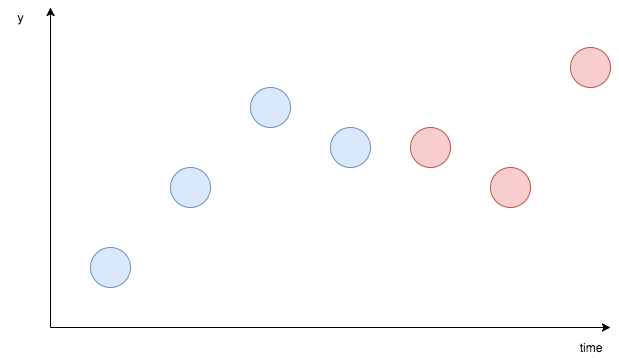Overview
Before, I made the simple local level model to time series data. At that article, I just showed the sampled points traced the data. This time, I also do sampling to predict the following points of the data.
Roughly, on the image above, the blue points are data you already have and the red points are the predict target. The purpose of this article is to make model by blue points, data and predict red points, the values of future.














